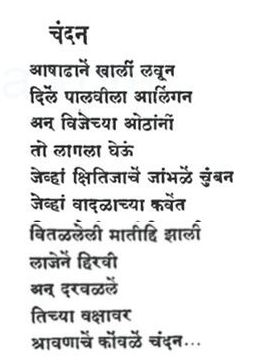कवी: सदानंद रेगे, वाङ्मय शोभा, सप्टेंबर १९५६
(काहीप्रमाणात रेगे जरी मर्ढेकरांचे समकालीन असले आणि त्यांच्या इतकेच (किंचित जास्तच!) प्रतिभाशाली असले तरी मर्ढेकरांच्या नव्या आणि 'स्वच्छ' "दवात आलीस" किंवा "माझ्या ढिलाश्या बोटांचे / तळ तुझ्या स्तनावर." ची छाप या कवितेवर मला दिसते)
p.s खालील चित्रातील तिच्या टॉपचा रंग कुठेतरी चंदनाच्या जवळचा आहे....
आर्टिस्ट: Robert McGinnis
Mr. McGinnis has been hailed 'Pop culture Rembrandt'....
However, the appeal of McGinnis’s female subjects goes beyond their conspicuous corporeal attributes, insists Art Scott, who co-authored—with the painter himself—a handsome 2014 book, The Art of Robert E. McGinnis. “To me,” Scott says, “his exceptional talent for depicting physical beauty and sensuality is secondary to his gift for imbuing his women with personality: intelligence, competence, spunkiness, danger—as called for in their portrayal in the text. Other top paperback artists had this gift as well, but pre-McGinnis especially, the Calendar Girl/Starlet (or Calendar Girl/Starlet Menaced by Bad Guy) look and pose was what was usually on the covers.”


No comments:
Post a Comment